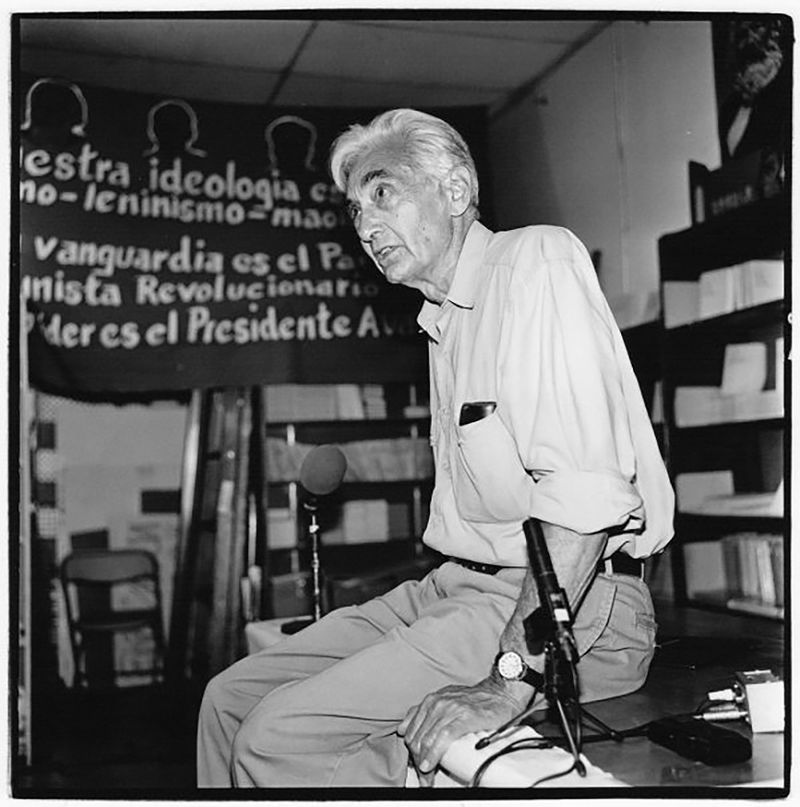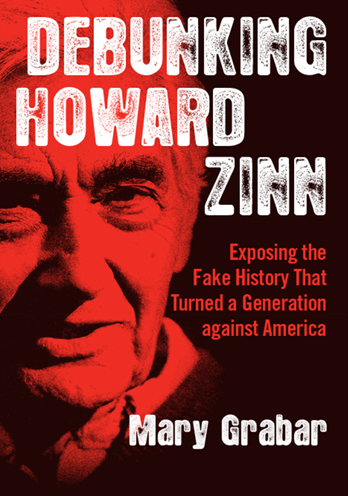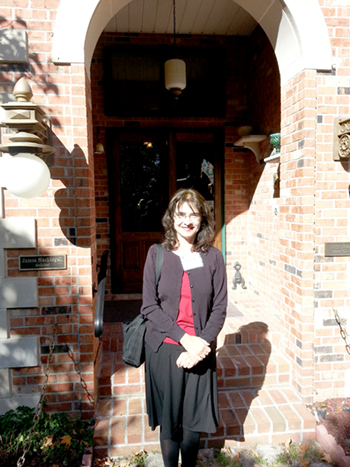By N. Greene, Posted by Mary Grabar, April 29, 2020; N. Greene (a pseudonym) teaches at a midwestern college.
 It’s that time of the semester. Time for research papers to be turned in and graded. I look forward to this part of the semester with a mixture of hope and dread. I often read papers that demonstrate learning, inquisitiveness, and the beginnings of student scholarship. However, I get my fair share of papers from students that have been thoroughly misled by the writings of Howard Zinn. I ask my students to pick an historical topic that lends itself well to debate so that they can craft a thesis and defend it in their papers. The Zinners among them, typically fall back on Zinn’s one sided thoroughly unobjective rants against America. This is the easiest course of action; they have been thoroughly indoctrinated by the time they get to my college class and this course of action requires no real thought or examination, just the spouting of righteous indignation at the United States.
It’s that time of the semester. Time for research papers to be turned in and graded. I look forward to this part of the semester with a mixture of hope and dread. I often read papers that demonstrate learning, inquisitiveness, and the beginnings of student scholarship. However, I get my fair share of papers from students that have been thoroughly misled by the writings of Howard Zinn. I ask my students to pick an historical topic that lends itself well to debate so that they can craft a thesis and defend it in their papers. The Zinners among them, typically fall back on Zinn’s one sided thoroughly unobjective rants against America. This is the easiest course of action; they have been thoroughly indoctrinated by the time they get to my college class and this course of action requires no real thought or examination, just the spouting of righteous indignation at the United States.
One topic that is a favorite each semester in the American History survey is the bombing of Japan with atomic weapons. To be fair, I do have some students that argue that the bombings were justified and necessary. My assumption is that these students did not do their history homework in high school or they recognized Zinn’s one sidedness and rejected it. However, most students that write about this topic write about it from Zinn’s point of view; that being that Japan was the victim rather than the aggressor. Zinn starts with the assumption that Japan was provoked into the war by the Roosevelt administration. This is a major assumption to make and to justify it he cites one of the dissenting judges from the Tokyo War Crimes Trial that took place after the war, Zinn writes:
One of the judges in the Tokyo War Crimes Trial after World War II, Radhabinod Pal, dissented from the general verdicts against Japanese officials and argued that the United States had clearly provoked the war with Japan and expected Japan to act.
Why cite one of the dissenting judges and not the majority? Zinn does not mention that Pal was one of three dissenting judges and that those three were outvoted by 11 other judges that were in the majority. Furthermore, the three dissenting judges from the trial did not all dissent from the majority opinion for the same reasons. So, Zinn simply found the judge (Pal) that he agreed with and cites Pal as the authoritative source because it makes the Allies and the United States look bad. Most high school students are not going to read Zinn with a critical eye – they are just going to take it all in and from what they can tell Zinn has authority and is presenting them with compelling evidence of Japan’s victimhood status and America’s treachery.
With the idea of Japan as victim firmly established at the beginning of his chapter on the Second World War, Zinn moves on to calling the use of atomic bombs on Japan “atrocities” later in the chapter, but not before spending page after page attacking America as an inherently horrible and racist place. Interestingly, Zinn spends no time discussing the war itself. For example, he never gets around to mentioning the millions of innocents slaughtered by the Japanese throughout Asia and the Pacific in concentration camps like those built in Europe by the Nazis. Zinn never mentions the tens of thousands of Korean women forced into prostitution to service the Japanese army. The Japanese army systematically raped as many Korean women as possible. The typical student can’t be blamed for coming away with the idea that that Japanese were victims and that there was no reason to drop atomic weapons on Japan to end the war. Here is what Zinn writes about the bombing of Japan:
The justification for these atrocities was that this would end the war quickly, making unnecessary an invasion of Japan. Such an invasion would cost a huge number of lives, the government said-a million, according to Secretary of State Byrnes; half a million, Truman claimed was the figure given him by General George Marshall. These estimates of invasion losses were not realistic, and seem to have been pulled
out of the air to justify bombings which, as their effects became known, horrified more and more people.
Students mimic these ideas, writing that Japan was already beaten so there was no need for the bombs, or they will argue that a million American casualties was a made up number. But Zinn’s assessment here begs the question, who wouldn’t want to get the war over with as soon as possible? Would anyone, other than the Japanese, want the war to linger on year after year? Does wanting the war to end make America the bad guys? Also, the numbers given to President Truman regarding a potential invasion were not made up. They came from different sources within government and military and, most importantly, they were based on almost four years of fighting against the Japanese in the Pacific and they all indicated roughly the same thing. As the war went on year after grinding year, the United States slowly moved closer and closer to the Japanese home islands and the closer they got the more fanatical the Japanese became. In wresting the island of Okinawa from Japan, the U.S. suffered roughly 50,000 casualties, the Japanese nearly 100,000; and the Japanese civilians on the island committed mass suicide rather than surrender to the Americans. And that’s just one battle of hundreds that took place throughout the Pacific. World War II historian and widely recognized expert, Victor Davis Hanson, points out that Japans leaders bragged openly about their planned “Glorious death of one hundred million.” How could anyone at the time think that the Japanese would certainly surrender if given the opportunity? Hanson also points out that even late in the war Japan still thought that if it could prolong the war, the Allies might come to the negotiating table and settle on a favorable armistice.
Dropping atomic bombs on Japan was brutal, but of course, the entire war was human brutality in the extreme – to pretend that the war was simply just another war until the U.S. used atomic weapons is to ignore reality. Truman was faced with a horrible choice use the weapons on Japan or continue the blockade of Japan, and watch as millions slowly starved to death, or invade the island which would have likely resulted in millions of casualties for the Americans and the Japanese.
What if instead, we were talking about Atomic bombs being dropped on Germany to end the war? Would students have objections? Of course not, they rightly detest the Nazis and every genocidal thing that the Nazis stood for. Why isn’t it the same thing with Japan? What Zinn fails to teach is that the Japanese Empire was simply the Asian version of the Nazi Empire. The two committed heinous crimes against humanity. Their slaughter of everyone that opposed them had radical racial motives, they ran concentration camps, they conducted inhumane medical experiments on their prisoners, and they unleashed an unrelenting tide of murder and rape until they were forcibly stopped by brute power. Rather than correctly demonstrating that the Japanese were like the Nazis in so many ways, Zinn actually makes it seem like America was more like Nazi Germany because of its killing of civilians.
Work Cited: Hanson, Victor Davis. 2018. “The Bombs of August” National Review August 23, 2018.
Photo of Howard Zinn by
By Slobodandimitrov - Own work, CC BY-SA 4.0, https://commons.wikimedia.org/w/index.php?curid=57072235





